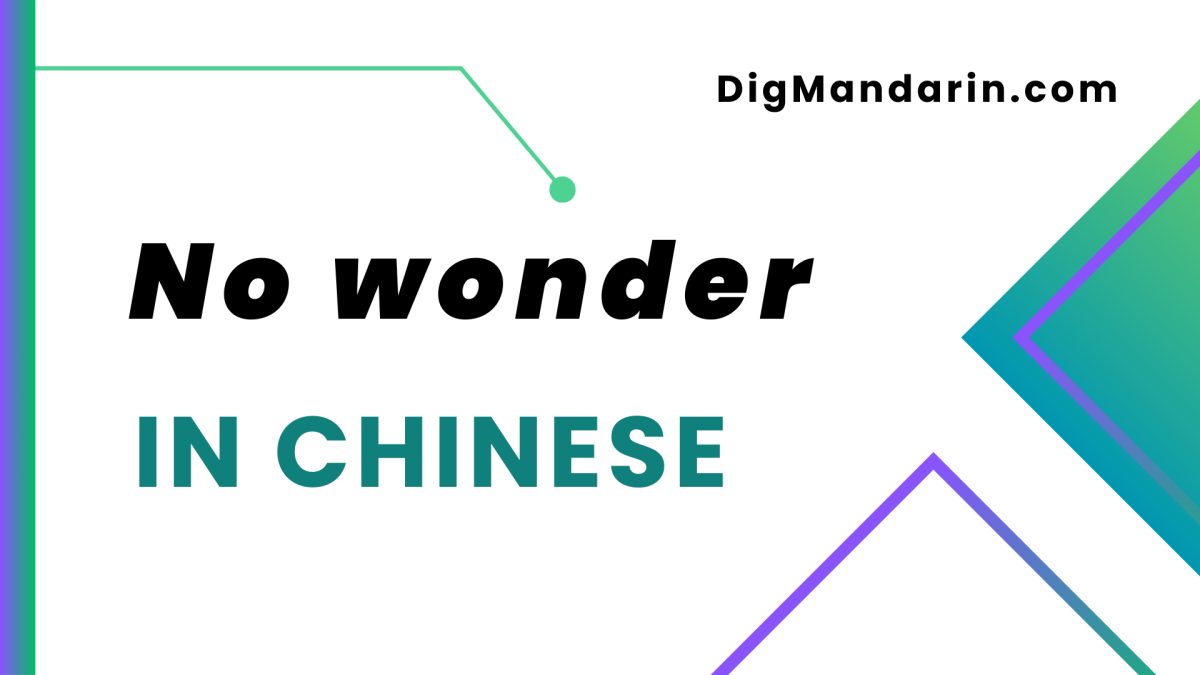Comprehensible Input for Mandarin Chinese: Develop an Accelerated Learning Plan
‘Comprehensible Input’ has become one of the biggest language learning buzzwords in recent years. It pops up in reference to YouTube videos, podcasts, articles, web novels, and even TikToks! But what does that actually mean? Does that make it better than any other kind of content?
The theory of Comprehensible Input comes from the famous linguist Stephen Krashen, and to put it in the simplest terms, it’s the idea that if you consume a lot of content (i.e. listen a lot and read a lot) then there will be major payoffs for your fluency. Learners of all levels can take advantage of this strategy, and thanks to the massive explosion of Comprehensible Input content across the web, it’s easy to find resources that will suit your specific needs.
You may think, “Great! Sign me up. I’ll watch 1,000 hours of Chinese dramas and be fluent in no time!” Well, let’s put on the brakes for a second. This strategy can do a lot for you, but it can’t do EVERYTHING for you.
To help break down the complexities of this topic, we’ll go over the basics of Krashen’s input hypothesis, the benefits and drawbacks of Comprehensible Input, and how to effectively incorporate it into your Chinese learning strategy for optimal results.
Where does the term ‘Comprehensible Input’ come from?
To give a brief history, Professor Stephen Krashen first published his theory of second language acquisition in the late 1980s. This included his extremely popular input hypothesis, which states that students progress when they receive target language input that is just above their current level. This gives birth to the term ‘Comprehensible Input,’ referencing the kind of content that learners can still follow and understand even if they haven’t learned every vocabulary word and grammar structure. Krashen’s method is quite similar to how children learn a language through natural exposure instead of sitting down and studying grammar rules and vocabulary lists.
“Language acquisition does not require extensive use of conscious grammatical rules, and does not require tedious drill.” – Professor Stephen Krashen
Sounds like a dream come true right? One of the reasons why Comprehensible Input has become such a popular learning strategy is because it rejects the idea that the only way to achieve a high level of fluency is to spend years studying nitty gritty grammar rules. Krashen opens the door to a new experience, where you can achieve the same result by simply spending time immersed in the language.
Let’s take a moment to discuss a few key points about finding the right kind of input for you:
- You have to be able to understand most of what you’re reading or listening to. In order to help you learn and grow, the content has to be slightly above the level you’re currently at. If you can understand 100% of it, then you’ll never learn anything new. If you can only understand about half of it, then there will be too much friction, and it will be nearly impossible for you to follow. Most people recommend choosing content that you can understand about 95-98% of.
- The content should be meaningful and relevant to you. Just because you can doesn’t always mean you should. By nature, we’re more likely to pay attention to and learn from things that we are personally interested in. When considering whether or not to invest your time and effort in something, consider if it supports your specific learning goals or if it truly sparks your interest.
Can Comprehensible Input make me fluent in Chinese?
Short answer: Yes. Comprehensible input can succeed in doing what many textbooks and courses fail at, which is teaching how the language is actually used.
Popular Youtuber Grace Mandarin Chinese has a particularly interesting video on the concept of contracted sentences, just one example of how native speakers will sound quite different from what you hear in a classroom setting. If you find that you can understand dialogues in a textbook but feel completely lost when listening to a real-life conversation between native speakers, then Comprehensible Input may just be the missing secret ingredient.
This strategy encourages exposing yourself to a wide variety of input sources, which will help you understand speakers who may have different accents, cadence, and vocabulary. For written content, consistent exposure can help you understand everything from street signs and text messages to newspaper articles and even poetry.
Ready to throw your copy of New Practical Chinese Reader out the window? Don’t be so hasty. We still have to address some of the shortcomings of Comprehensible Input.
Why can’t I use Comprehensible Input as my only learning method?
Problem 1: You can’t skip the fundamentals
While it may be tempting to put all your eggs into one basket, let’s take a moment to consider that Comprehensible Input has a prerequisite: you need to have at least some foundation in the language if you are going to meaningfully engage with the content.
This is especially relevant when learning Chinese because if you want to start reading native sources, you have to learn how to read first. In fact, learning about character construction and stroke order is key to understanding how the language functions, and you won’t get far without it.
The same goes for listening. When you’re being exposed to a completely new language, you need to have at least a basic understanding of the different tones and how they are used. It may be possible to pick up on some subtleties of pronunciation, like tone sandhi, through Comprehensible Input. But overall, establishing a foundational understanding of how the language works is key to success.
If you’re looking to establish a strong foundation that will then allow you to start your Comprehensible Input journey, consider taking an online course like the ones available at DigMandarin, which offer a structured introduction to Mandarin Chinese fundamentals.
Problem 2: Comprehensible Input can discourage learning how to speak and write
“These methods do not force early production in the second language, but allow students to produce when they are ‘ready’, recognizing that improvement comes from supplying communicative and comprehensible input, and not from forcing and correcting production.” – Professor Stephen Krashen
Don’t get me wrong. I’m not saying that Krashen is discouraging his students from learning how to speak and write. Listening and reading are actually key pieces of learning how to speak and write like native speakers. However, if we place a very strong emphasis on input, then many students tend to neglect their output.
Comprehensible Input is a low-anxiety and low-stress approach, but sometimes it’s necessary to embrace the discomfort of putting yourself out there.
In many ways, Comprehensible Input helps build confidence in a second language, but it can be hard to leave that comfort zone. When learning a new language, we’re bound to make mistakes, many mistakes! Krashen encourages students to start producing when they feel ‘ready.’ This differs from the opinion of many teachers who encourage their students to produce from day one. There are benefits and drawbacks to each approach. But if you’re going to follow a Comprehensible Input model for your studies, know that your production skills may lag behind if you ignore them for too long.
One important factor to consider is your ‘why’ for learning Chinese. Many students are learning because they want to engage with other people, including family members, romantic partners, colleagues, or friends. If you find yourself neglecting your speaking or writing skills, then you may be missing out on valuable relationships and personal connections.
Let’s consider another quote from Krashen himself:
“In the real world, conversations with sympathetic native speakers who are willing to help the acquirer understand are very helpful.”
This pulls back the curtain a bit and shows us that Krashen’s hypothesis proposed back in the 80’s doesn’t exactly match what we see in our modern internet-based society. Conversing with a native speaker is by far the most immersive and active way to engage with the language, but you can’t simply sit back and listen to them talk. Try to be an active participant and you’ll see just how quickly your skills can improve.
How to use Comprehensible Input in combination with other learning methods
Finally, let’s take a look at how you can put the Comprehensible Input method into practice without falling victim to the pitfalls we just mentioned.
Keep in mind that becoming fluent in a language requires you to master a lot of different skills, so it’s natural that there isn’t one clear path to follow. The best approach is one that is balanced and tailored to your specific needs and your current fluency level.
As mentioned above, the newer you are to learning Chinese, the more you’ll benefit from starting with a more structured approach, either in a formal class, with an online Chinese course, or one-on-one tutor.
If you’ve already been on your Chinese language journey for a bit, you likely already have the foundation you need and probably feel ready to jump in the deep end. Your next step, then, is to find the content that is both meaningful and comprehensible to you. Obviously, this will vary a lot based on your current level and interests, but here are a few resources to get you started:
- DigMandarin’s review of popular Chinese podcasts
- Heavenly Path’s guide to Comprehensive Reading
- DigMandarin’s guide to Chinese graded readers
- Comprehensible Chinese, a YouTube channel with Comprehensible Input stories for all levels
A Final Word
While Comprehensible Input has certainly earned its popularity as one of the best methods for learning a new language, you want to make sure that you’re consuming content from a wide variety of sources. Think of it like your diet. Protein is a vital nutrient, but if you only ever eat meat, you certainly won’t be in good health. The longer you spend ignoring your other needs, the harder it will be to catch up in the end.
Even if you’re completely sold on Krashen’s input hypothesis, consider how supplementing with other resources, such as courses, tutoring, or practicing with friends, could help you reach your fluency goals. In the end, your Chinese learning journey is as unique as you are. It’s up to you if you want to follow a map or tread a new path entirely.
What are your favorite Chinese resources to listen to and read? Do you have a favorite TV show or reading app to share? Let us know in the comments below!





This Post Has 0 Comments